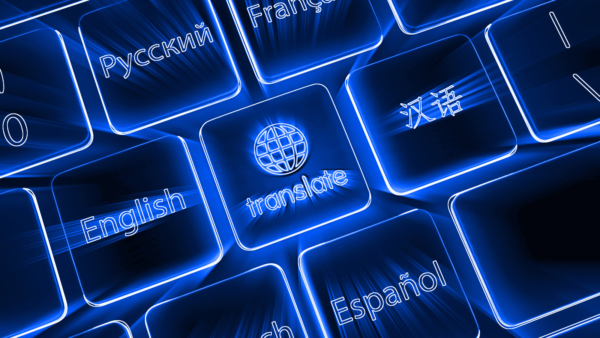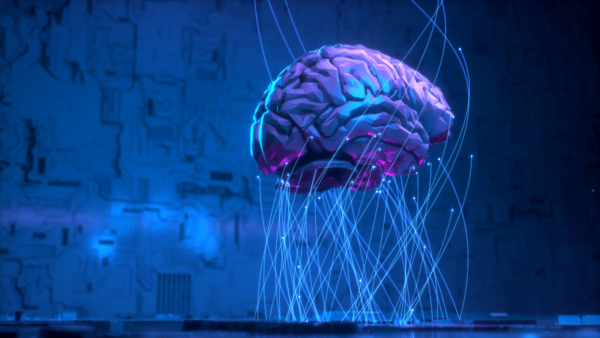Imagine a world where technology truly empowers you in everyday situations. Picture yourself sitting in a meeting, and instead of trying to take detailed notes of everything, an Artificial Intelligence (AI) creates a summary and a to-do list from what is discussed, suggests when things should be done, and more. This can be a big deal for people who are hard of hearing or have cognitive disabilities, among many others.
Imagine having a digital buddy that reminds you when to take your medicine or when to finish your daily tasks. Or using an app, like “Be My Eyes”, which is able to give you detailed audio descriptions of visual aspects of the world around you. These are not futuristic ideas. They can happen soon due to advancements in Artificial Intelligence.
So, how can this happen? What are the technologies behind all this? In this article, we will explain some AI technologies using everyday examples.
Navigation menu:
- How is AI different from traditional computer programs?
- Going deeper into AI – Machine learning: The mother of AI
- Deep learning – the computer makes a guess based on statistics
- Neural networks: the brain of AI
- Example of how neural networks work applied to disability
How is AI different from traditional computer programs?
If AI is just a more advanced type of computer program and is considered to be a game changer, a relevant question is how it differs from traditional computer programs.
Think of it like this: old technology works according to rules. Let’s take the example of a vending machine. If you put money into the machine and select a lemonade, it will give you that lemonade unless it is out of stock or has a mechanical issue. The machine acts on the basis of rules written by humans. These rules were given to the soda machine in the form of a computer program.
An AI is also a computer program but of a different type. It was not entirely written by a human, and it is not based on rules written by humans. Compared to the vending machine, you can think of an AI more like a personal assistant shopper who looks at what you have bought before and guesses what you want in the future. An AI will try to make predictions about you and what you want based on past data about you and others like you. It could recommend you buy candy or an apple with your soda, without detailed instructions written by a human.
How does it do this? In the next sections, we will explain some technologies behind it.

Going deeper into AI – Machine learning: The mother of AI
The first term you should familiarise yourself with is machine learning. Because artificial intelligence is a subcategory of a broader “world” called machine learning.
As we mentioned in our last article, during machine learning, a computer is trained using large sets of data and uses examples in that data to recognise patterns and make predictions. The predictions are made for new information based on the past data.
Example: Consider that a vending machine would use machine learning. When it analyses its sales, it might find that sales of lemonade increase in the summer months. So, it might predict a higher demand for lemonade in the summer and tell the head office to fill all the vending machines with extra lemonade during this time of the year.
It may also be able to access data from other vending machines and realise that people buy lemonade and ice cream together. It will then tell the head office to also add a row with ice cream.
Deep learning – the computer makes a guess based on statistics
One of the wonders of AI is Deep Learning. Deep Learning is an AI technique that enables computers to “learn” and make predictions by analysing huge amounts of data.
Human language is complex, a single word can have more than one meaning, but translation programs like Google Translate and DeepL are impressively good at recognising nuances in language.
Here are three examples of how the word light can have different meanings:
-
- “Remember to get light coke for the party”.
- “I need light here.”.
- “I need a brighter light…”.
In sentence 1, “light” refers to light soda, drinks with artificial sweeteners. In sentence 2, it is less clear if the person is asking for a light drink or a lamp. In sentence 3, the meaning of the word “light” is indicated by the word “brighter” since a flashlight can be brighter, but a soda cannot.
A traditional rule-based computer program for translation would only be able to produce accurate translations if a human provided it, with every sentence in which the word “light” occurs, and also told the computer what the meaning behind the word “light” is in each and every of those sentences.
Since we humans like to express ourselves creatively, it would be very time consuming and almost impossible to create a comprehensive list with all sentences where each word in a language occurs. So, how does translation software manage to correctly represent ambiguities in human language in most cases?

The answer is statistics. By allowing the computer to read astronomical amounts of human text and interactions, the computer “learns” to recognise patterns in the language. These patterns include grammar rules, syntax, semantics, context and many others.
This means that the AI is not just looking at individual words but also at the way they are structured in a sentence, the meaning they convey, and the situation in which they are used. By joining all of these, AI can often decipher the multiple meanings of the word ‘light’ and translate it accurately depending on its usage in a sentence.
By analysing a huge number of human interactions, Deep Learning allows the translation software to give a probability score. We can assume that it is statistically more likely that the second sentence “I need light here” refers to the need for a flashlight in most cases. Since light drinks are something, we drink because we like the taste more than it being something we need.
So here, the computer solves the translation task by guessing based on the statistical probabilities. Among other things, it tries to identify keywords and then looks at which other words occur in the sentence, the order of the words and their relation to each other.
This works for more than translation software. For example, speech-to-text programs work in a similar way.
Neural networks: the brain of AI
So Deep Learning helps our machines “think”. But what mechanism enables this complex “thinking” process? The mechanisms are called Neural networks. They are a subcategory of Deep Learning.
Let’s take our example of a translation software: it is also an instance of Deep Learning with neural networks. Today’s translation tools rely on something called neural networks to process nuances in languages.
So, what is a neural network? It’s a software with a “similar anatomy” to the human brain.
Think of neural networks as a team of detectives trying to solve a crime. Each detective might look at a different clue, or a part of the scene, and interview different people. They then put the clues together and jointly solve the crime. In the case of neural networks, these “detectives” are actually little computer programs that we call ‘neurons’ working together. They share their findings with each other and come up with a solution. So, even when there are lots of clues, they can work through it together and solve the problem.

Example of how neural networks work applied to disability
Let’s say you have an app that provides audio descriptions to partially sighted or blind people. The user of the app takes a picture of a scene where a child is riding the back of a horse. One neuron might analyse the child, another neuron might analyse the horse, and a third neuron might analyse how the child is sitting on the horse. A fourth neuron could try to make comparisons to previous data to double-check that the AI is on the right track when it tries to describe the scene as a child riding on a horse.
If you make the neurons process more complex information that takes more steps, they can solve more complicated tasks because they take more details into account. For example, one thing is translating an e-mail from Swedish to English. However, I can also ask the AI to translate from Swedish to English, send to my English-speaking contacts, and then translate to Spanish to send to my Spanish-speaking contacts.
Each added step means it is more complicated for us to understand and for the AI to explain to humans why it came to a certain conclusion. Each step makes its decision path less clear. This complexity creates challenges, especially in situations where individuals (including persons with disabilities) need and deserve to understand why the AI made certain decisions, such as being refused a job or denied insurance, or disability-related allowances.
It is then important to ensure that activists and advocates have access to how these networks were developed and what data was used to train them.
Learn more about AI
Training an AI is very important. In our next article, we will explore how these programs and mechanisms are trained to use data and come to these decisions. Meanwhile, sign up to receive updates to our “AI & Disability” Series.
About the AI and Disability Series
This article has been written by Kave Noori (EDF Artificial Intelligence Policy Officer), as part of the “AI and Disability Series”.
The “AI and Disability Series” is supported by the European Fund for Artificial Intelligence and Society, funder of the Disability Inclusive AI project. The series aims to take you through the progress of AI, the EU’s policy perspectives and how we ensure that AI empowers people with disabilities and protects us from harm or discrimination